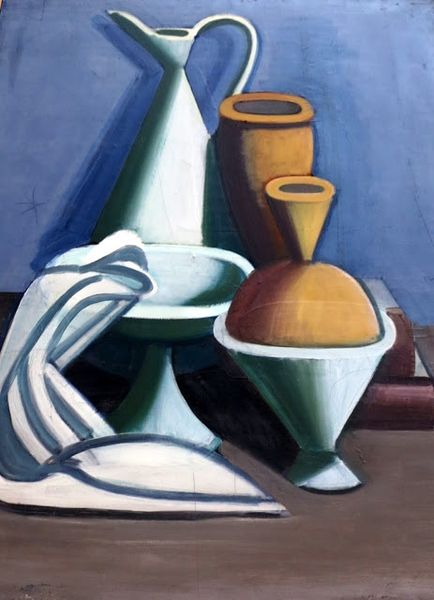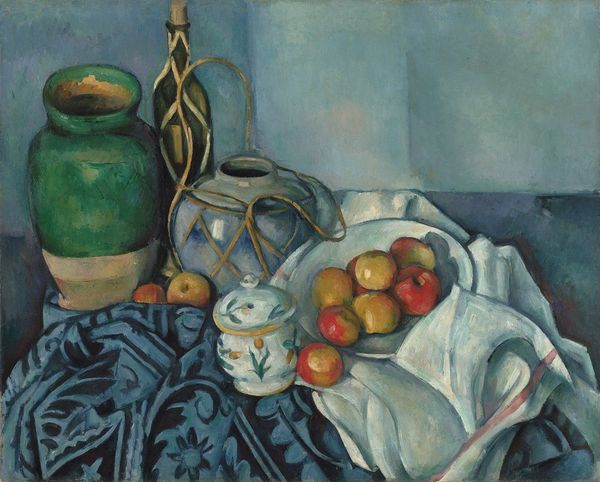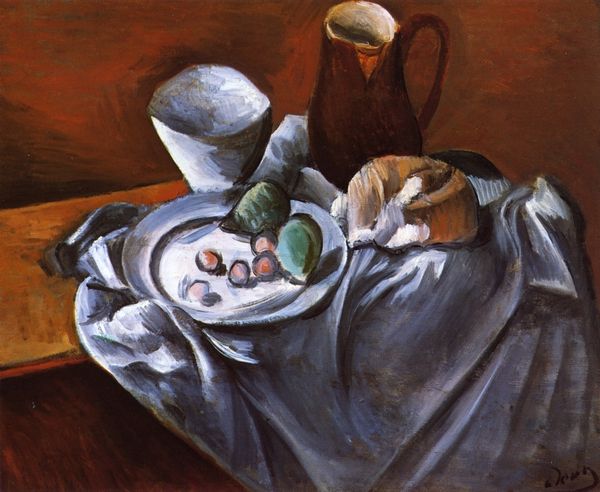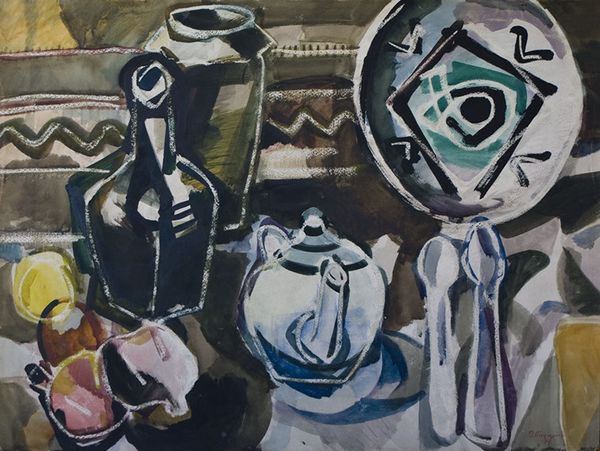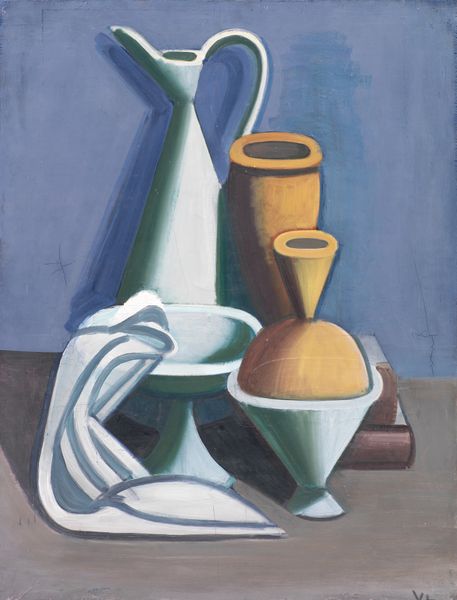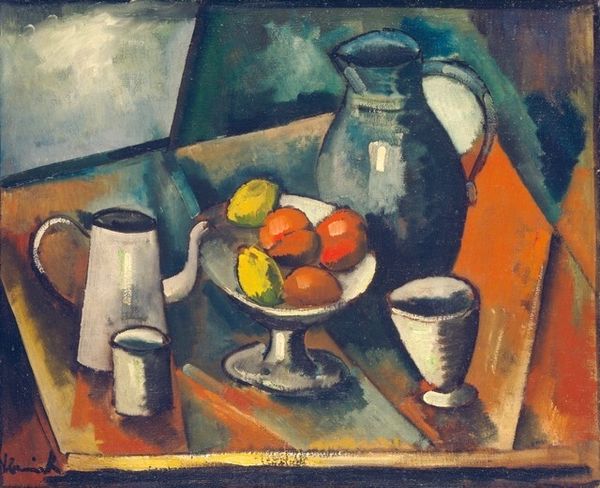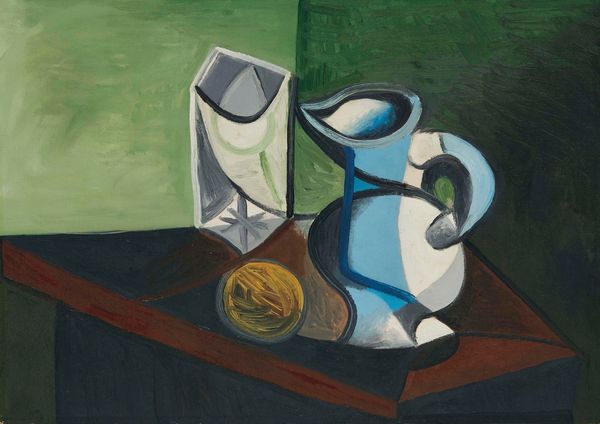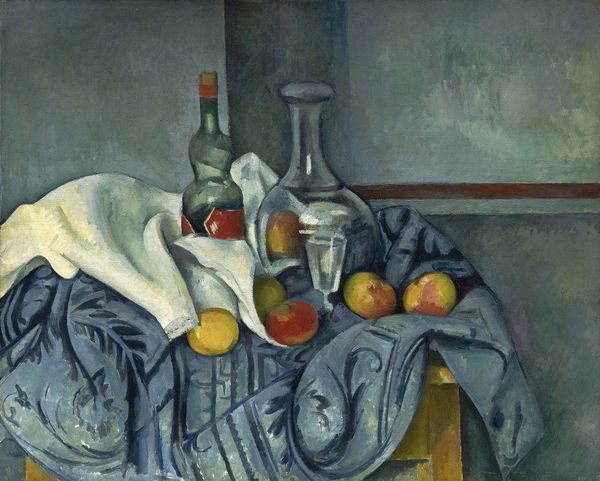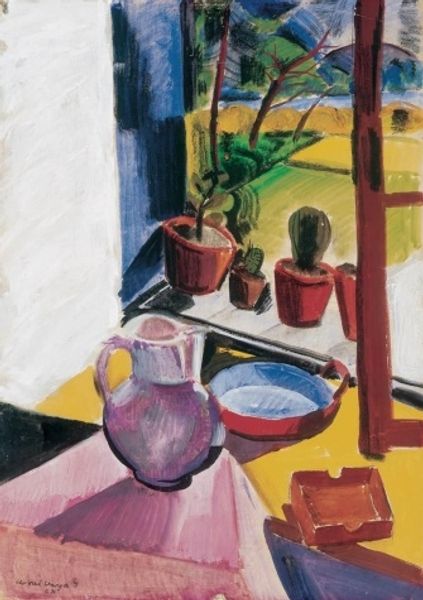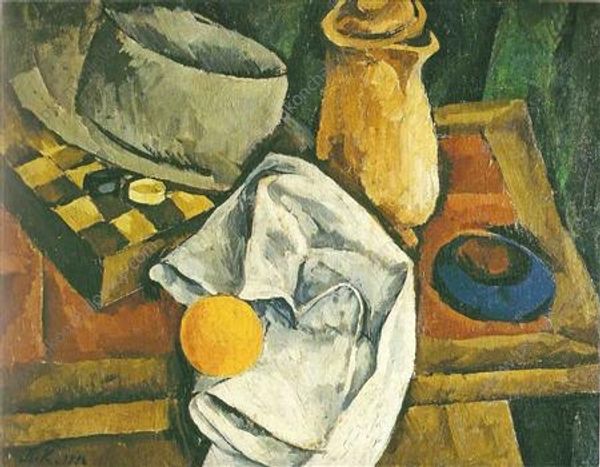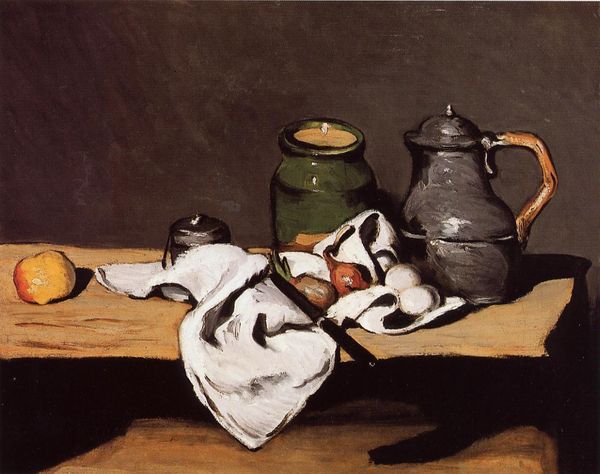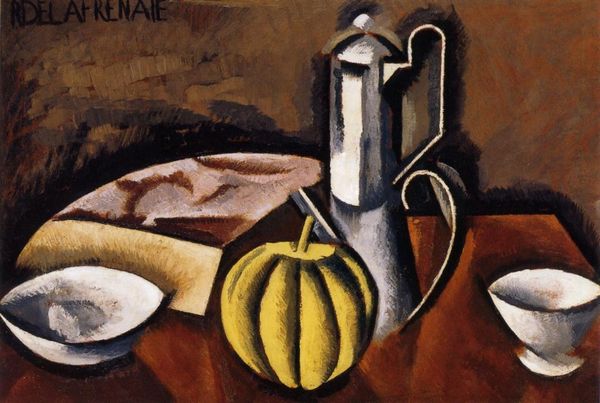
oil-paint
#
still-life
#
oil-paint
#
figuration
#
oil painting
#
italian-renaissance
#
modernism
#
realism
Copyright: Renato Guttuso,Fair Use
Editor: This is "Brocca e drappo," or "Jug and Cloth," painted in 1979 by Renato Guttuso using oil paints. I'm immediately drawn to the contrast between the rigid, almost geometric background and the fluid forms of the objects in the foreground. What do you see in this piece, particularly regarding its structure and composition? Curator: Indeed. The painting presents a compelling tension. Note how Guttuso structures the pictorial space through distinct, almost architectural blocks of colour in the background—ochre, brown, and a striking cerulean. These rectilinear forms provide a stark contrast to the organic shapes of the jug, the draping cloth, the bottle, and the cup with its saucer. The objects themselves are carefully arranged; the jug, the focal point, leads the eye diagonally across the canvas, terminating at the top right corner with the almost ethereal depiction in the background. What strikes you about this intentional imbalance? Editor: I see that. It almost feels like a stage setting. Is there a way to decode why those particular objects were arranged as they are? Is there a reason why those specific background colors or background shapes? Curator: Precisely. Each object functions as a signifier within a complex visual language. Observe how the smoothness of the bottle contrasts with the rougher textures of the jug. The whiteness of the cloth may refer to purity or exposure, emphasized by its sharp angles which invite reflection. The cup is centered on top of it; this implies that its placement and rendering are crucial to understanding this composition. The tension exists at the border of representation and semiotics, where we invite symbolic associations of domesticity and temporality, particularly since this artwork was painted late in the artist's life. What, in your opinion, does Guttuso want to convey? Editor: I see the visual language. Guttuso is using form and texture to evoke a story with objects. It's like he’s creating a visual poem through shape and placement. Thank you; this has truly illuminated how to read beyond the surface of a painting. Curator: And thank you for seeing the layers within the arrangement. Formal analysis enhances how one considers the historical implications within this modern setting.
Comments
No comments
Be the first to comment and join the conversation on the ultimate creative platform.
